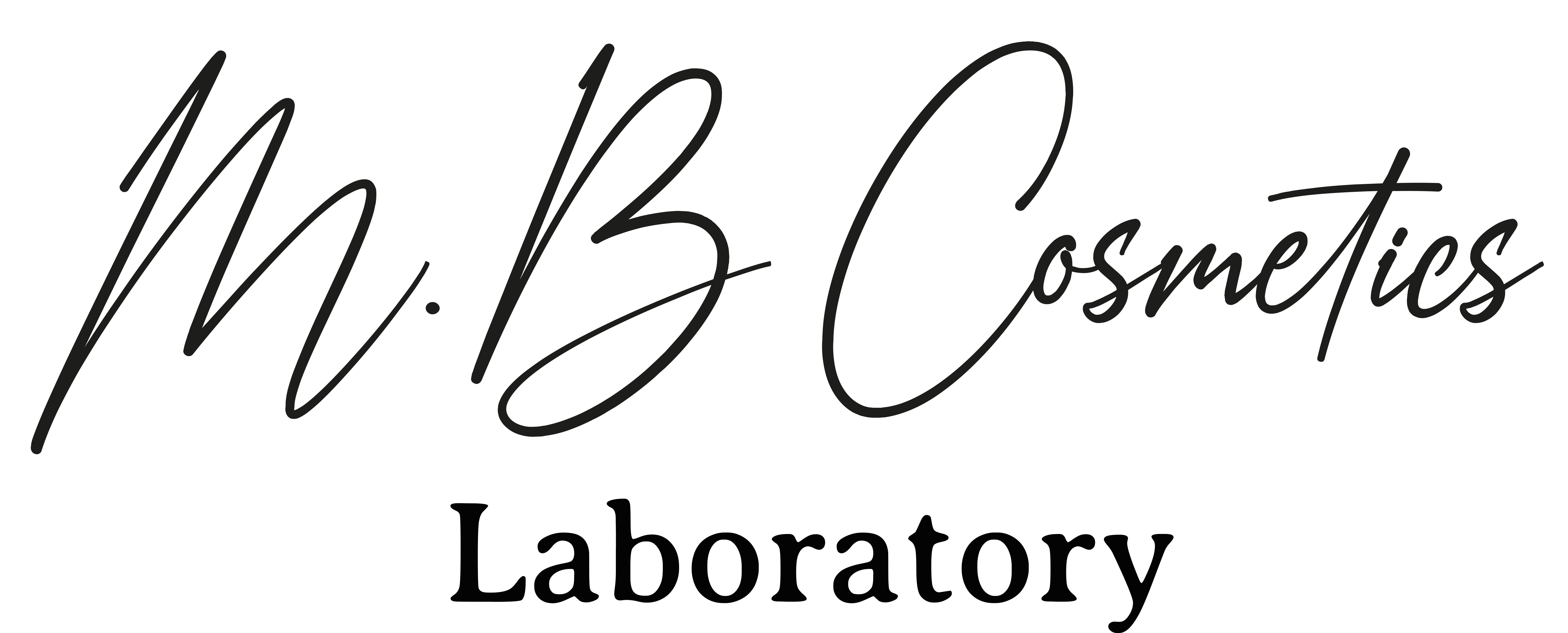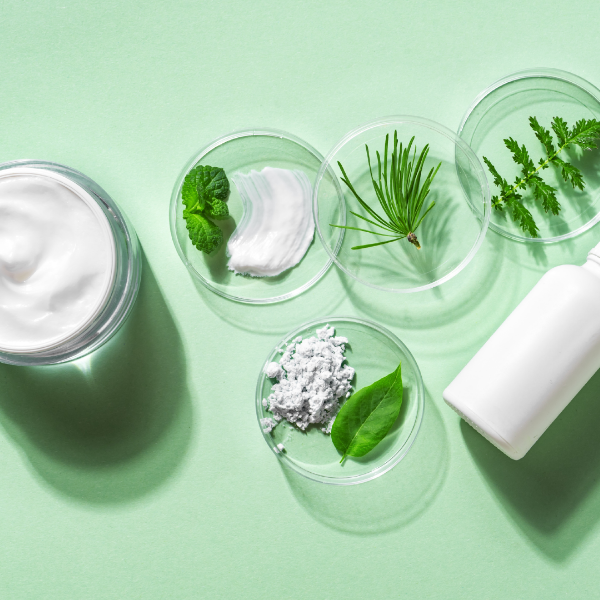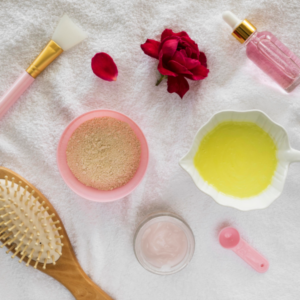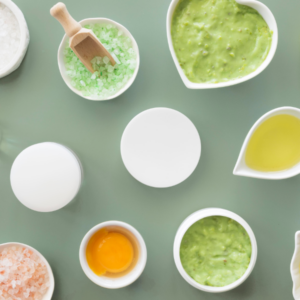Good morning! I hope you are fired up from last week’s post about preservation and pH control. Today’, we’re stirring up some more magic in the lab with a new hot topic: prebiotics, probiotics and postbiotics to protect your skin’s barrier function.
Skincare is undergoing a shift. As the skincare industry pivots from aggressive, high-strength actives to more holistic, skin-respecting strategies, microbiome support is becoming non-negotiable. Consumers are asking smarter questions, and brands are expected to deliver more than short-term results. This shift has opened the door to one of the most exciting frontiers in cosmetic science: formulating for the skin’s microbiome. And at the heart of this evolution? A trio of ingredients with microbiological magic: prebiotics, probiotics, and the new frontrunner: postbiotics.
We’ve seen the word “microbiome” all over product packaging, from TikTok serums to K-beauty essences, but is microbiome skincare just marketing hype or is there real science behind it?
As a cosmetic chemist deeply entrenched in both formulation and global regulation, here’s my take: the future of effective, inclusive, and intelligent skincare includes microbiome support. But it requires precision. And postbiotics are currently the most stable, effective, and formulator-friendly option available.
What Is the Skin Microbiome?
The skin microbiome is the invisible ecosystem of bacteria, fungi, and microbes living on the surface of our skin. When balanced, this community defends against pathogens, supports immune function, and helps maintain a healthy skin barrier. When disrupted? Cue acne, eczema, rosacea, and hypersensitivity.
Microbiome-friendly skincare is a category designed to nourish, balance, and support its natural flora.
Understanding the Biotic Trio: Prebiotics, Probiotics, and Postbiotics
Prebiotics are like fertiliser for your skin’s good bacteria. These non-living compounds (think inulin or alpha-glucan oligosaccharide) feed beneficial microbes and help crowd out the harmful ones. They’re easy to formulate with, water-soluble, and stable across a wide pH range.
Probiotics, by contrast, are live microorganisms. But here’s the catch: most skincare products don’t use live microorganisms. They’re fragile, require refrigeration, and typically don’t survive preservation systems. Instead, what you’ll usually see are lysates, ferment filtrates, or heat-killed bacteria ; inactive but still biologically active. These non-living probiotics can calm inflammation, support the barrier, and reduce sebum production, but they’re not technically probiotics under strict definitions.
Postbiotics are the beneficial by-products of probiotic metabolism ; the non-viable byproducts of probiotic bacteria: peptides, enzymes, short-chain fatty acids, and more. Postbiotics offer measurable, stable benefits like reducing redness, improving hydration, and strengthening the skin barrier—without the complexity of working with live bacteria.
It is easy to confuse the three, especially probiotics and postbiotics. So here is a small example of these two categories, so you can understand better what they are and what they do: Lactobacillus Ferment vs Lactobacillus Ferment Lysate. The former is a non-living probiotic (inactivated bacteria), used for calming inflammation. The latter is a metabolite from fermentation, used for hydration and redness relief.
Why Postbiotics Are the Future of Skincare
Postbiotics are gaining traction not because they’re trendy, but because they solve real formulation challenges. They don’t require cold storage. They’re shelf-stable. They comply with stringent regulations across the EU, US, Canada, Australia, and ASEAN markets. Most importantly, postbiotics deliver targeted bioactivity, reducing redness, improving hydration, and strengthening the skin barrier—without the complexity of live bacteria.
Here are some top-performing postbiotics to know about:
- Lactobacillus Ferment Lysate: Supports hydration and soothes sensitive skin.
- Bifida Ferment Lysate: Famous for barrier repair and skin immunity.
- Lactococcus Ferment Lysate: Boosts cell turnover and reinforces stressed skin.
- CobioBalance® (Alpha-glucan oligosaccharide + inactivated Lactobacillus): Clinically backed and ideal for sensitive skin or post-cleansing care.
These ingredients are typically used at 1–5% (always follow supplier guidelines and cosmetic regulation limits), added in the cool-down phase, and pair beautifully with barrier-boosters like ceramides, panthenol, and squalane.
Busting Common Myths
Let’s clear the air:
- Probiotics in skincare rarely contain live cultures. But that doesn’t mean they aren’t amazing additions!
- Microbiome-friendly doesn’t mean preservative-free (and it shouldn’t, unless you would like to poison your customers!).
- Not all ferments are good—some are unstable or untested.
- “Preservatives kill the microbiome” is another common misconception. In reality, good preservative systems target harmful bacteria and yeasts without disrupting the skin’s resident flora. It’s about balance—not sterilisation.
Leading brands are already harnessing the power of microbiome skincare to captivate consumers.
La Roche-Posay’s Toleriane Dermallergo Cream, infused with prebiotic thermal spring water and neurosensine, soothes sensitive skin by supporting microbial balance.
Gallinée’s Face Mask & Scrub features a non-living probiotic, specifically Lactobacillus Ferment (inactivated Lactobacillus bacteria) to calms irritation, support the skin’s microbial balance, and enhance barrier function.
Drunk Elephant’s B-Goldi Bright Drops incorporate fermented barley extract, a postbiotic-like ingredient, to hydrate and even skin tone.
These examples show how microbiome principles are shaping innovative products and inspiring formulators to create their own barrier-supporting formulas.
Top Skin Conditions That Benefit from Postbiotics
Postbiotic skincare is especially helpful in addressing chronic skin conditions that stem from microbial imbalance or barrier disruption. As a formulator or brand owner, you should consider these actives in products targeting acne-prone skin, rosacea, eczema, and sensitive or post-procedure skin. Their anti-inflammatory and reparative properties make them versatile across multiple skin types and needs.
Why Consumers Are Embracing Microbiome Skincare
In 2025, shoppers are searching for “Microbiome-safe”, “Redness relief”, ”Post-acid repair”, “Barrier support” on Google and social media. Postbiotics meet all of these needs. They’re elegant. They’re non-sensory (no scent, no sting, no residue). And they signal that your brand is thoughtful, science-backed, and future-forward. Crafting a microbiome-supportive product is easier than you might think. Especially if you combine the power of two or three of the biotics realm.
Additionally, tailoring microbiome skincare to specific skin types unlocks another level of inclusivity. For oily and acne-prone skin, postbiotics like Lactococcus Ferment Lysate can regulate sebum production and calm inflammation, reducing breakouts without stripping the skin’s natural flora. Dry or sensitive skin, on the other hand, benefits from Bifida Ferment Lysate, which boosts hydration and strengthens the barrier, alleviating flaking and irritation. By addressing individual skin needs, microbiome-supportive products deliver targeted results, making them a versatile addition to any routine.
Before I Say Goodbye, Let Me Leave You With My Final Thoughts: Focus On Skin-Friendly Formulation That Actually Works!
Postbiotics represent a win-win for formulators and customers alike. They simplify development. They elevate skin health. They satisfy regulatory requirements. And they tell a powerful story about supporting the skin’s ecosystem, not fighting it. You can use them alone or in combination with prebiotics/probiotics and other skin supportive ingredients such as ceramides, squalane, centella asiatica, roman or german chamomile, oats, and many more.
Microbiome-friendly skincare are more than just a buzzword, they represent a profound shift in how we think about skincare. Rather than stripping the skin or overloading it with actives, microbiome-friendly formulations align with how the skin naturally functions. It’s about respect. It’s about regulation. And most of all, it’s about results that last. Whether you’re formulating your next serum or revamping your brand’s product philosophy, postbiotics deserve a permanent place on your ingredient shortlist.
Need Help Developing Biome-Safe Formulas? Don’t be shy, email us! We specialise in creating high-performance, microbiome-friendly formulas compliant with EU, US, Canadian regulations (& more). Your next product awaits!
Here’s to formulas that work and brands that thrive.
From My Lab to Yours,
Morgane








Add comment